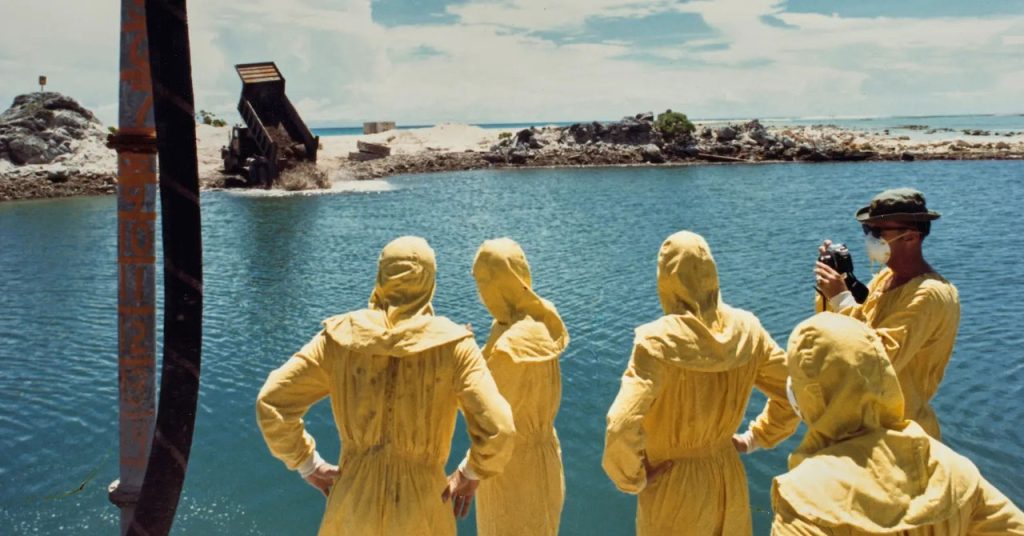The Lingering Effects of US Nuclear Testing in the Marshall Islands and Greenland
A Shocking Discovery
In 2017, while studying at the University of Hawaii, Ariana Tibon stumbled upon a startling photograph online. The black-and-white image depicted a man cradling an infant, with the caption revealing that the man was her great-grandfather, Nelson Anjain, having his baby monitored by a radiation safety team member on Rongelap, just two days after the infamous Castle Bravo nuclear test in 1954.
The Devastating Impact of Nuclear Testing
The United States conducted a total of 67 nuclear weapon tests in the Marshall Islands during the Cold War era, with Castle Bravo being the most powerful among them. These tests had far-reaching consequences for the Indigenous population, forcing them to relocate, contaminating their food sources, and causing long-term health issues, including various types of cancer, that continue to affect the Marshallese people to this day.
Climate Change Threatens to Unearth Buried Nuclear Waste
A recent federal report by the Government Accountability Office (GAO) has shed light on the potential risks posed by the remnants of nuclear contamination not only in the Pacific but also in Greenland and Spain. The report suggests that rising sea levels due to climate change could potentially spread contamination in the Marshall Islands, while in Greenland, nuclear waste frozen in ice sheets could be exposed by the year 2100.
“The possibility to influence the environment is there, which could further affect the food chain and further affect the people living in the area as well,” said Hjalmar Dahl, president of Inuit Circumpolar Council Greenland.
Disagreements and Distrust
The GAO report highlights the conflicting risk assessments between Marshall Islands officials and the US Department of Energy, leading to a distrust among residents regarding radiological information provided by the US agency. The report recommends that the Department of Energy develop a communications strategy to better convey information about potential pollution risks to the Marshallese people.
A Call for Action and Environmental Remediation
Ariana Tibon, now the chair of the National Nuclear Commission in the Marshall Islands, questions the effectiveness of a mere communications strategy in addressing the issues at hand. She emphasizes the need for concrete action and implementation of environmental remediation measures to restore the affected lands to safe and habitable conditions for the communities.
Unfulfilled Promises and the Need for Support
Despite the Biden administration’s recent agreement to fund a new museum commemorating those affected by nuclear testing and climate change initiatives in the Marshall Islands, these efforts have repeatedly failed to garner the necessary support from Congress. This lack of action persists even though these initiatives are part of an ongoing treaty with the Marshall Islands and a broader national security effort to maintain goodwill in the Pacific region as a counterbalance to China’s influence.

6 Comments
The nuclear waste we buried abroad is coming back to haunt us, thanks to climate change
The consequences of our past actions are catching up with us as the climate crisis threatens to expose our nuclear secrets buried overseas
The sins of our nuclear past may soon be unearthed by the ravages of climate change
The ghosts of our nuclear misdeeds are stirring in their shallow graves, roused by the relentless march of climate change
The skeletons in our nuclear closet are rattling as climate change comes knocking
Our radioactive chickens are coming home to roost as the climate apocalypse looms